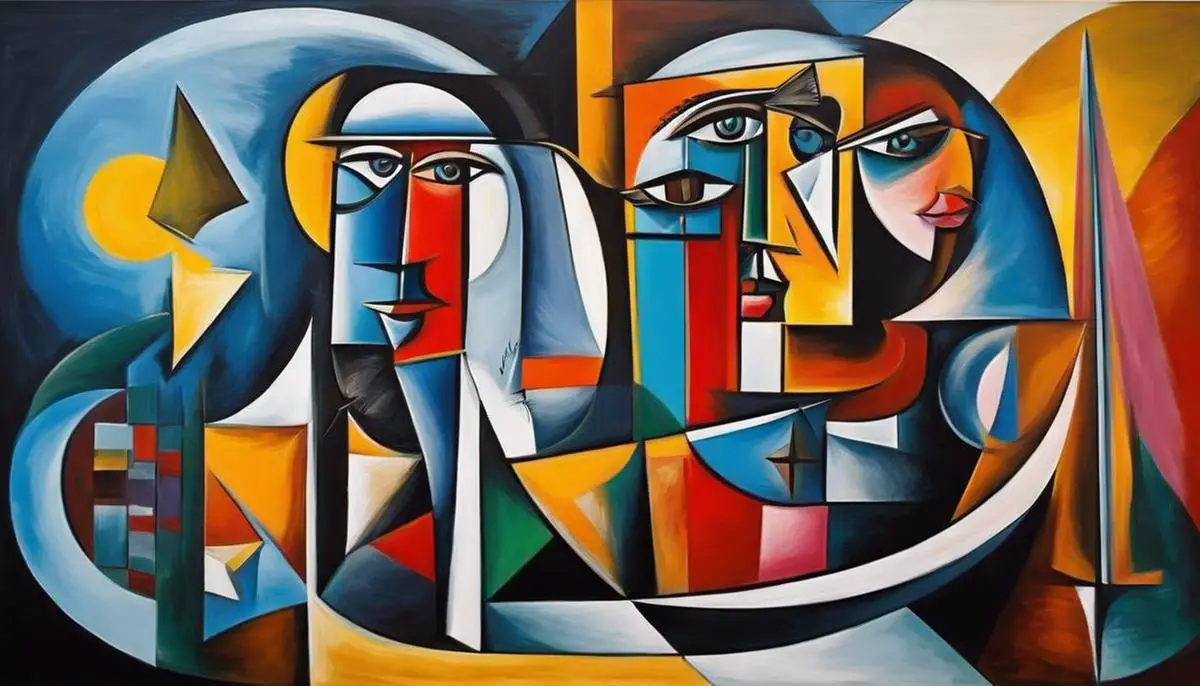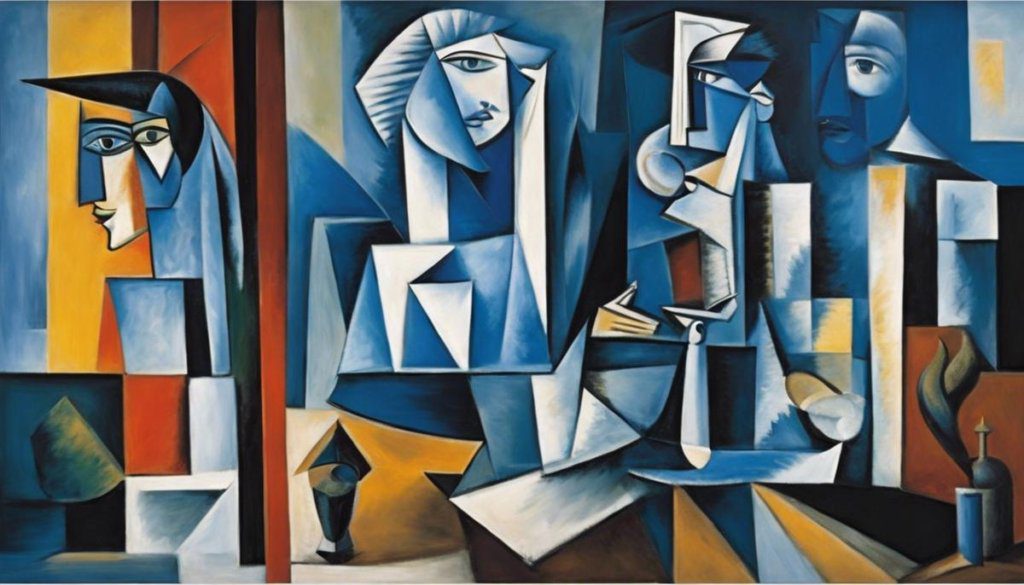Diving into the alluring world of art that is imbued with immense cultural richness and captivating creativity, the oeuvre of the titan of modern art, Pablo Picasso, offers countless hours of enrapturing discoveries. Rooted in his diverse creative epochs like the Blue Period, Rose Period, and Cubism, Picasso’s paintings are not only aesthetic masterpieces but also a testament to his groundbreaking visions. The fluctuations in their monetary values offer us a riveting insight into the fascinating interplay between an artist’s changing style, market trends, collectors’ tastes, and socio-economic influences. To become acutely informed about this intriguing nexus, one must delve into the heart of Picasso’s artistic periods, the impact of market trends on his paintings’ values, the historical achievements of his works at auctions, and, most essentially, the cultural and artistic significance that his pieces boast.
Picasso’s Artistic Periods and Their Influence on His Paintings’ Worth
Picasso’s Artistic Evolution: A Key Player in Shaping Today’s Art Market
“With each brushstroke, something new is birthed into the world of art.” These words could never ring truer than when related to the mammoth artistic journey of one of the most influential painters in history, Pablo Diego José Francisco de Paula Juan Nepomuceno María de los Remedios Cipriano de la Santísima Trinidad Ruiz y Picasso, commonly recognised as Picasso. The evolution of Picasso’s artistic styles not only moulded his legacy but significantly shaped the contemporary value of his diverse body of work.
Born on October 25, 1881, Picasso’s inexhaustible creative spirit led him to illustrate over 20,000 works in his lifetime! These works fell into distinct periods – Blue Period, Rose Period, African Art-inspired Period, Cubism, and Classicism and Surrealism. Each shift was imbued with fresh artistic vision, signifying a restless drive that undeniably impacted the present value of his creations.
The melancholic Blue Period (1901-1904), characterised by sombre shades and themes of poverty, loneliness, and despair, was a period of financial struggle for Picasso. Today, paintings from this period are greatly treasured, with one piece, ‘The Blue Room’, estimated at a whopping £50 million!
Strikingly different, the Rose Period that followed (1904-1906) saw brighter colours, circus themes, and convivial scenes. These diverse emotional depths and aesthetic approach have now come to be seen as investment-worthy, iconic pieces of history.
During the African Art-inspired Period (1907-1909), Picasso explored primitivism, indirectly contributing to the public’s perception and appreciation of African art. His seminal work from this period, ‘Les Demoiselle’s d’Avignon’, now finds its home in New York’s Museum of Modern Art, symbolising the intrinsic and monetary value of this phase.
Inventing with Georges Braque what we now know as Cubism (1909-1919), Picasso conveyed the world in geometric angles and abstract forms. This period broke conventions, proposing new ways of seeing and understanding subject matter. Today, Cubist pieces by Picasso frequently fetch astronomical prices at auctions around the globe.
In his final periods, Picasso transitioned from Cubism to Classicism and Surrealism (1918-1973). Fusing visual elements from mythology, ancient history, and his romances, these periods illuminated Picasso’s artistic brilliance in blending varied influences.
The dynamic and continuous evolution of Picasso’s craft, from the Blue Period’s soul-stirring melancholy to the geometric deconstructions of Cubism, provides collectors a breadth of styles to invest in. It’s worth noting that each period’s rarity also plays a role in determining the financial value of Picasso’s works; the fewer creations during a period, the higher their likely monetary worth today.
Picasso’s artistic evolution has much to teach us about the transformative power of creativity. Each change, each stroke, each period, not only redefined the canvas then but continues to recreate the artistic world today. Picasso’s mark on art remains a gold standard, a beacon of excellence that continues to shape the art market’s essential dynamics – a testament to his enduring and influential legacy.

Market Trends and Picasso’s Paintings
Delving Deeper: Picasso’s Paintings and Market Trends
Continuing from the vivacious legacy that Picasso has ingrained in the art world, his works’ everlasting influence transcends aesthetics to diffuse a firm imprint in the realm of art collectors. Given his prolific portfolio, the dizzying range of Picasso’s stellar opus triggers an electric sense of anticipation among patrons, breeding a dynamic rapport between Picasso’s masterpieces and their corresponding market value.
One cannot fathom the journey of Picasso’s work without acknowledging the imperative role of Cubism. This revolutionary vanguard steered the ship of art towards untrodden waters, breaking down form into a succession of vivacious lines and vigorous colours. Picasso’s facet-like forms wrestle with reality in a sensual dance, immortalising ordinary subjects of life into dramatic spectacles of artistic genius. However, not merely a visual delight, the rarity and reputation of cubism artwork contribute significantly to its market gravity. Encrusted with a rich historical narrative, these pieces are especially coveted by collectors, often willing to shell out astronomical sums for a Picasso Cubist masterpiece – hence, fuelling a competitive collector’s market.
Subsequently, Picasso catered his inquisitive mind to the enchanting aura of classicism and surrealism, sparking a golden era in his artistic timeline. These periods witnessed Picasso waltz through a soft yet precise abstraction, presenting a shiny beacon for collectors. However, the economic value of these marvellous creations does not merely hang on Picasso’s name. Instead, the unavailability of these surreal pieces fuels the continued surge in the market as supply and demand dynamics leap into play.
Drawing into focus another critical influence, global trends and sentiments cast a considerable influence on Picasso’s artistic value. As periods of adversity or societal transformation roll over, the value of Picasso’s work often fluctuates in response. Depending on a collector’s sentiment, interpretations and personal connections, a percentage premium could be willingly placed on a Picasso masterpiece, giving it an ever-intrinsic value that ricochets far beyond decimal points and numbers.
In conclusion, the world of Picasso’s paintings resonates with collectors due to their artistic poignancy coupled with market trends. Picasso’s incredible array of periods holds substantial economic value today, beyond just the innate beauty of the pieces. These factors combine to create an intense desirability among collectors, resulting in an art market completely enthralled by Picasso’s influence. However, this acknowledgement could bring about a newfound appreciation, not just for Picasso, but for the symphony of interconnecting factors that transform historical artwork into contemporary, valuable antiquities.
With the artistic lexicon of Picasso ever thriving, it weaves a tapestry of colourful challenges and irresistible allure for collectors, making his masterpieces much more than just a painting — they are conversations imbued with a spirit of their own. Perhaps, unraveling the mysteries entwined within their canvas could offer a glance into Picasso’s genius — as magnificent, enigmatic, and unpredictable as ever.

Historical Auction Achievements of Picasso’s Works
The Bidding Legacy of Picasso’s Paintings: An Aesthetic Investment
Few artists stand as prominent and influential as Pablo Picasso. This legendary figure’s work casts a long shadow over the 20th century, each new phase sparking renewed interest and reevaluation of his genius. Yet, our discussion here veers toward the fascinating history of Picasso’s masterpieces changing hands, chronicling the noteworthy milestones and their repercussions on the perceived value of his artwork.
To truly grasp the market’s enchantment, we delve into the 1980s where the spectacle of Picasso’s paintings under the hammer began. One of the first records of a Picasso work escalating beyond imagination, ‘Yo, Picasso’ fetched an astounding $47.85 million in 1989. A departure from the bleak tones of his Blue and Rose periods, this self-portrait from his lesser-known ‘Boy with a Palette’ period set the tone for Picasso’s Auction saga, effectively announcing that with rarity and the Picasso brand came astronomical prices.
Coinciding with the economic boom, it was this seemingly unrestricted indulgence that further ignited the flame of Picasso’s auctioning fervour. In a financial coupling with art, the artist’s ‘Les Noces de Pierrette’ garnered a breathtaking $51.67 million in 1989, establishing another pinnacle in the auction world and further solidifying Picasso as a truly investment-worthy artist.
Fast forward to the 21st century; Picasso’s allure continues to enthrall bidders. With Cubism as the prevailing movement in the auction scene, the allure of this strikingly unique and provoking style skyrocketed prices. An unparalleled example is ‘Les Femmes d’Alger (Version ‘O’)’, a stunning cubist exposé. Fervor reached fever-pitch in 2015 when it was auctioned for an astounding $179.4 million, a record-breaking achievement that crowned Picasso as a true titan of blue-chip art.
Surrealism and Classicism, Picasso’s later explorations, although seldom auctioned owing to their scarcity, did not fail to generate awe. ‘Le Rêve’, a surrealist manifestation, went under the hammer for an eye-watering $155 million privately in 2013. Similarly, his classist-style ‘Garçon à la pipe’ was bought for $104 million at auction in 2004.
The driving forces propelling Picasso’s auction prices go beyond simple supply and demand. As emotional connections are forged and personal interpretations imbued, these pieces metamorphosise into intimate embodiments of historical narratives, societal sentiments, and personal significance, all playing a profound role in their desirability and subsequent worth.
Although the path to acquiring a Picasso can be fraught with competition from fervent collectors and museums, the challenge only stokes the allure of owning such a masterpiece. Whether depicted through melancholic blues, vivacious roses, bold geometric forms or dreamy surreal renderings, each piece stands as testament to Picasso’s magnificent, enigmatic, and unpredictable genius.
In essence, bidding on a Picasso is more than purchasing art; it’s investing in the woven tapestry of art history. His works’ ethereal beauty and historical value aside, it’s the symbolic ownership of a piece of Picasso’s enigma that truly drives the ceaseless desire for his paintings. Thus, with every bidding war, another layer of the Picasso legend unfolds for the next masterwork awaiting its turn under the auctioneer’s hammer.

The Cultural and Artistic Significance of Picasso’s Paintings
Picasso’s art is an enigma enveloped inside a masterpiece. The multifaceted approach to his artwork is a testament to his creativity and willingness to defy convention. Investing in his artwork is a unique opportunity to embrace and appreciate the amalgamation of cultural and artistic significance that defines each piece.
The cultural ramifications of Picasso’s work are tremendous. His African Art-inspired Period challenged global audiences to recognise and appreciate African art. Moreover, his signature Cubist style revolutionized traditional artistic principles, heralding a new era in art history. Importantly, it triggered worldwide discourse on art interpretation, inviting audiences to perceive reality from different angles.
However, the cultural significance of Picasso’s artwork extends beyond the creation period. The subsequent ripple effects in the art community contribute to the rising value of his pieces. His works have shaped generations of artists and critics alike, prompting fresh perspectives, stimulating dialogue, and provoking invaluable introspection.
Intrinsic to understanding Picasso’s cultural impact is charting his influence on the broader art market. Consumers’ willingness to invest considerable sums in his works is closely tied to the esteem in which he is held in the art world. This perceived prestige attaches prestigious cultural significance to owning a Picasso, hence swelling the market value. His works are not just paintings; they are socio-cultural artefacts that encapsulate a revolutionary period in art history.
Moreover, each of Picasso’s art periods boasts unique value, diversifying investment potential. Still, discernment is essential, as fluctuating popular culture trends can impact their relative appeal to collectors. This can create a fascinating, if somewhat confounding, investment landscape.
Importantly, investing in Picasso isn’t merely a financial exercise: it’s about immersing oneself in a vibrant cultural discourse. Each piece offers an intimate glimpse into Picasso’s enigmatic world, making ownership a deeply personal, enriching experience. Ultimately, the allure lies in the symbiosis of financial gain and cultural enlightenment.
In conclusion, Picasso’s artwork has shaped our understanding of art and culture while simultaneously serving as an alluring investment prospect. These dual aspects confer his works with an enduring allure, embodying the delicate dance between finance and culture. The genius of Picasso is not only evident in his artwork but also in the legacy that continues to shape investment trends and cultural dialogues surrounding his work. Through investing in Picasso’s artwork, one can appreciate and contribute to the perpetuation of this remarkable legacy.

Pablo Picasso, a figure of prodigious significance in the art world, continues to captivate audiences with his matchless creativity and pioneering efforts in reshaping the landscape of modern art. His paintings, teeming with enchanting narratives and trailblazing styles, have carved out an indelible place in the annals of art history. Their worth, which has seen dramatic fluctuations over time, provides an intriguing reflection of Picasso’s constantly evolving artistic vision, market trends, socio-economic factors, and, intriguingly, the ever-changing tastes of collectors. Appreciating the value of Picasso’s works, therefore, goes beyond simple monetary figures. It calls upon us to savour the rich tapestry of his artistic journey, the vicissitudes of the art market, and most importantly, the artistry and cultural narratives embedded within each of his works.
Recommend0 recommendationsPublished in Uncategorized








Responses